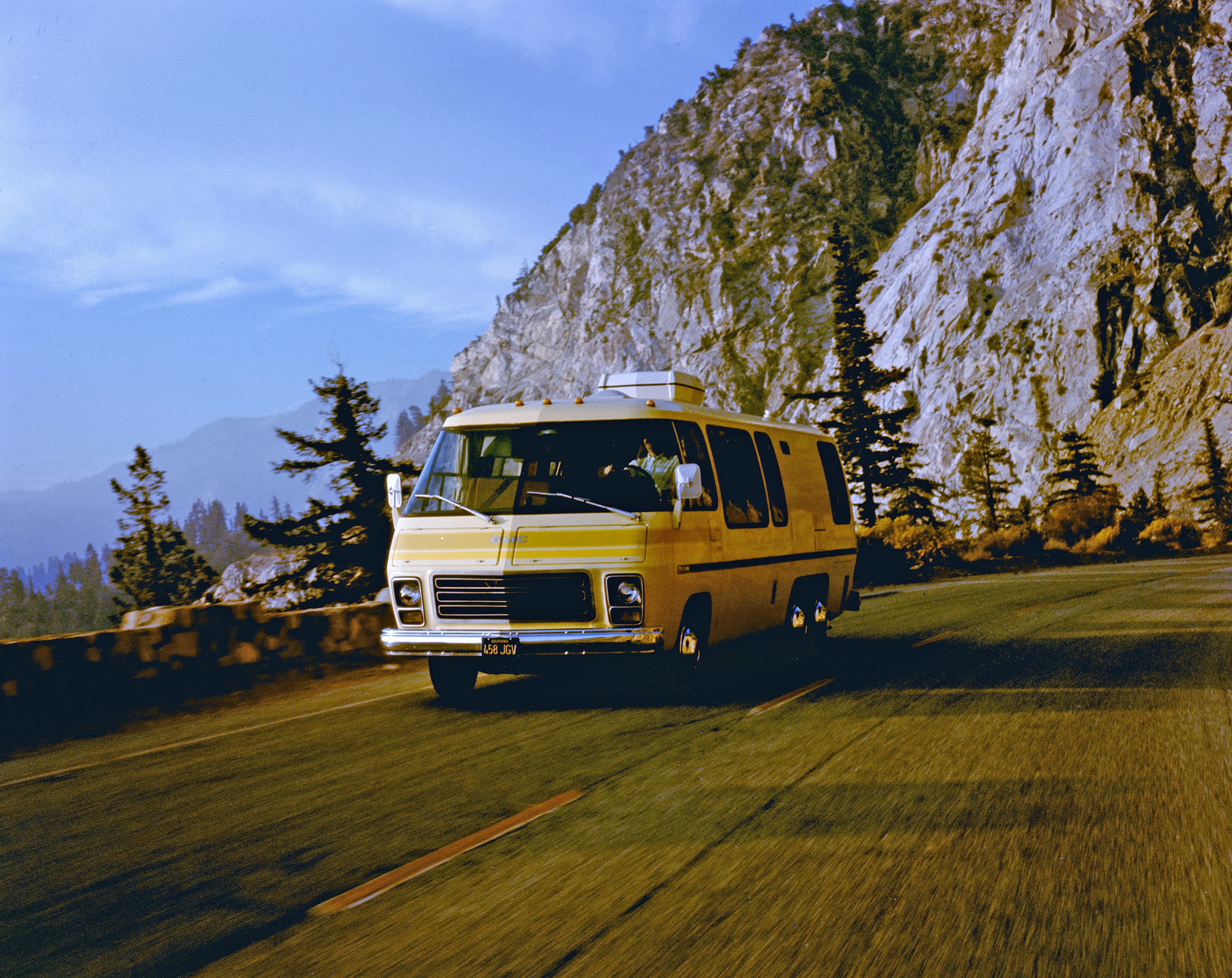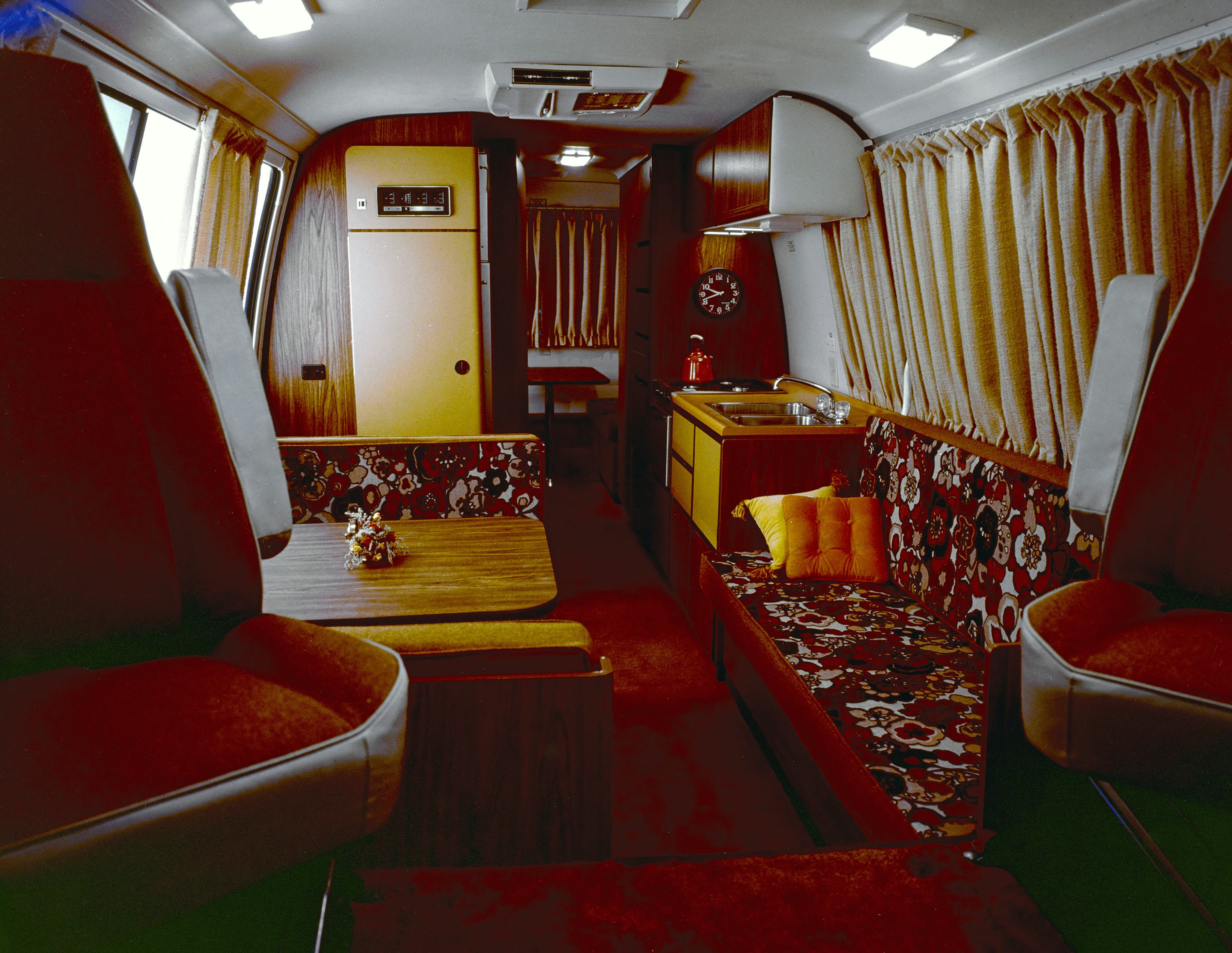When the GMC Motorhome Revolutionized Road Style
In the ‘70s, this groovy land yacht became an instant sci-fi-meets-granola classic.

General Motors 2023
THE YEAR WAS 1972. Don McLean’s “American Pie” was big. Watergate hadn’t yet broke. And the gas crisis—what’s a gas crisis? Cars were boats and motorhomes were spaceships and sales were booming.
General Motors wanted in—which was unusual. Then as now, car companies didn’t much dabble in RVs. Automakers sold truck chassis to coach builders. Coach builders bolted on stick-and-siding rectangles, filled them with shag carpeting and wood paneling, then shipped them off to the lot. America’s motorhome pilgrims jostled down the highways with all the style and comfort of semi-truck drivers.
GMC designers thought, let’s start from scratch. They built a whole new platform, powered by the same engine and drivetrain in a front-wheel-drive Oldsmobile Toronado, a sports coupe. Without a long driveshaft for the cabin to sit above, the new motorhome rode close to the ground. For the body, GM went space age—aerodynamic, sure, but also just eye candy: A curved coach body. Bold accent striping. Big, flush-mounted, rounded-corner windows. House & Garden magazine consulted on the over-the-top interiors (hello avocado and harvest gold!).


When the first GMC Motorhome models dropped in ’73, the ads declared, “It doesn’t ride like a truck. It doesn’t look like a box.”
“You couldn’t stop at a gas station without somebody coming by and admiring it,” says Bill Bryant, a GMC Motorhome historian who, over the course of 34 years, put some 200,000 miles on his. “It just had this cachet, this real desirability.”
And, alas, it had a short lifespan. Oil shocks crippled RV sales, and by ’78, Americans were flirting with a new vehicular fancy: pickup trucks. GMC wanted more plants making pickups and nixed its weird, wonderful motorhome. Just shy of 13,000 were built, Bryant says, but a surprising number are still on the road, darlings of a cult fan base. His was still going strong when he sold it a decade back. “They designed these knowing they had to live a little longer than a car,” he says. “But I’m sure nobody was thinking 50 years. Outrageous, isn’t it?”







